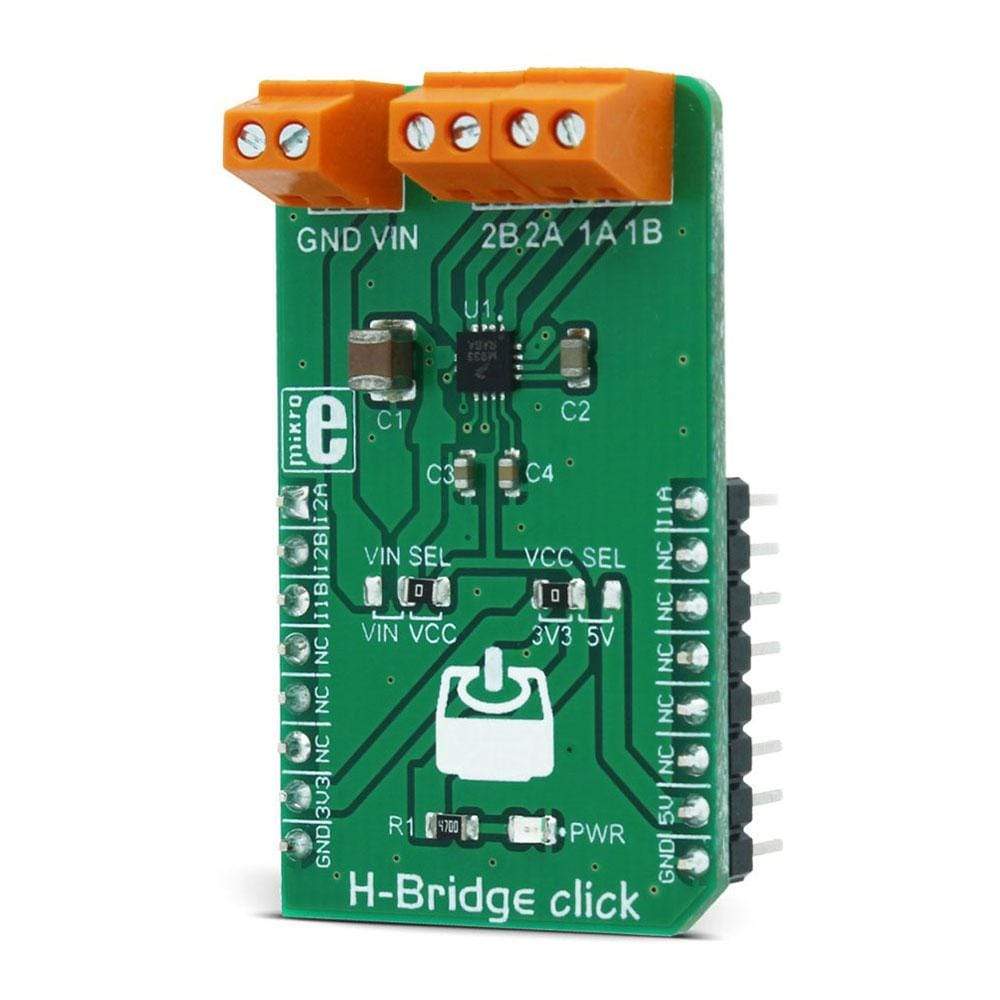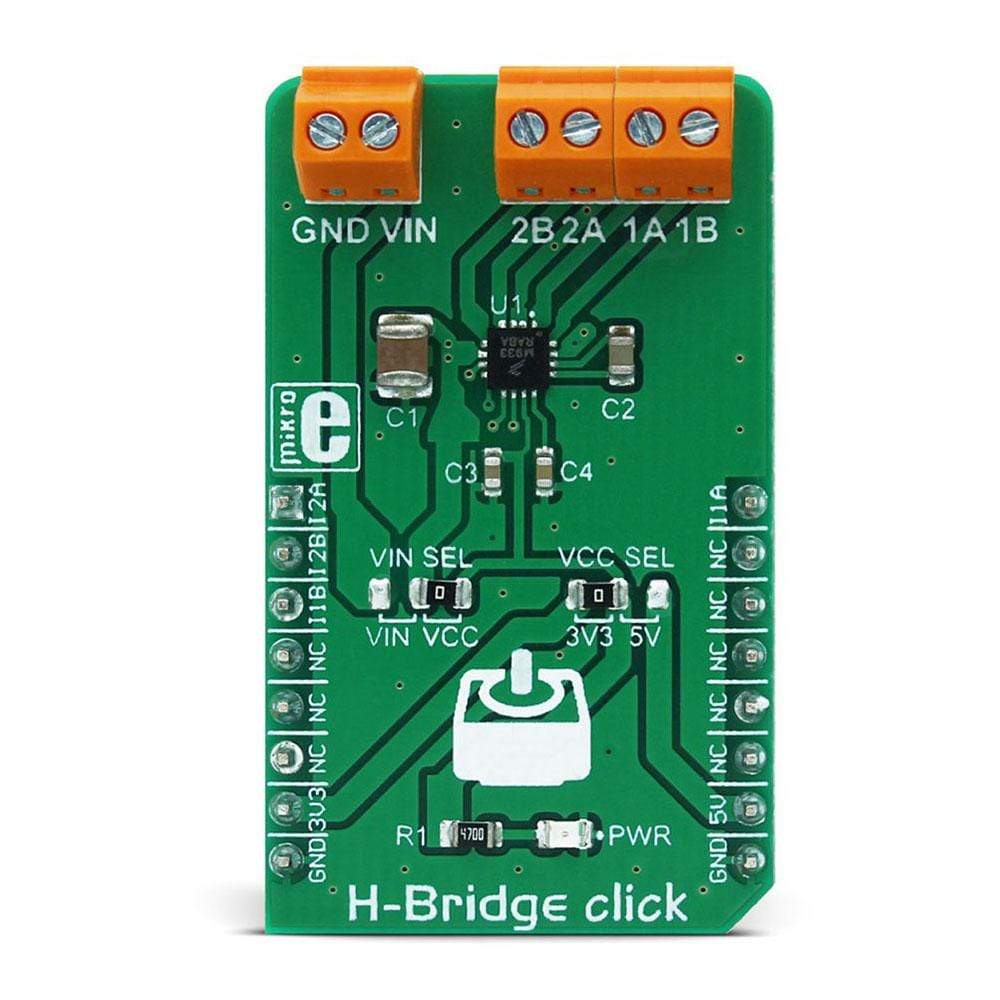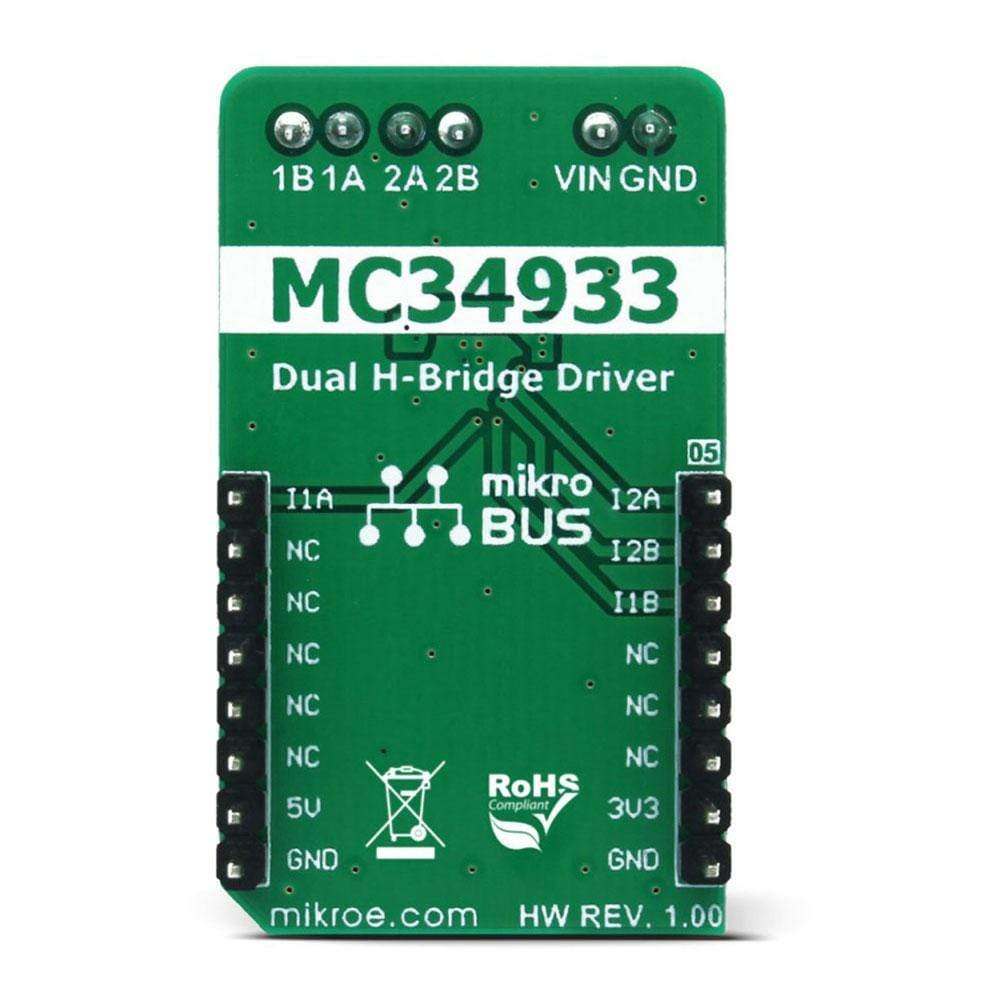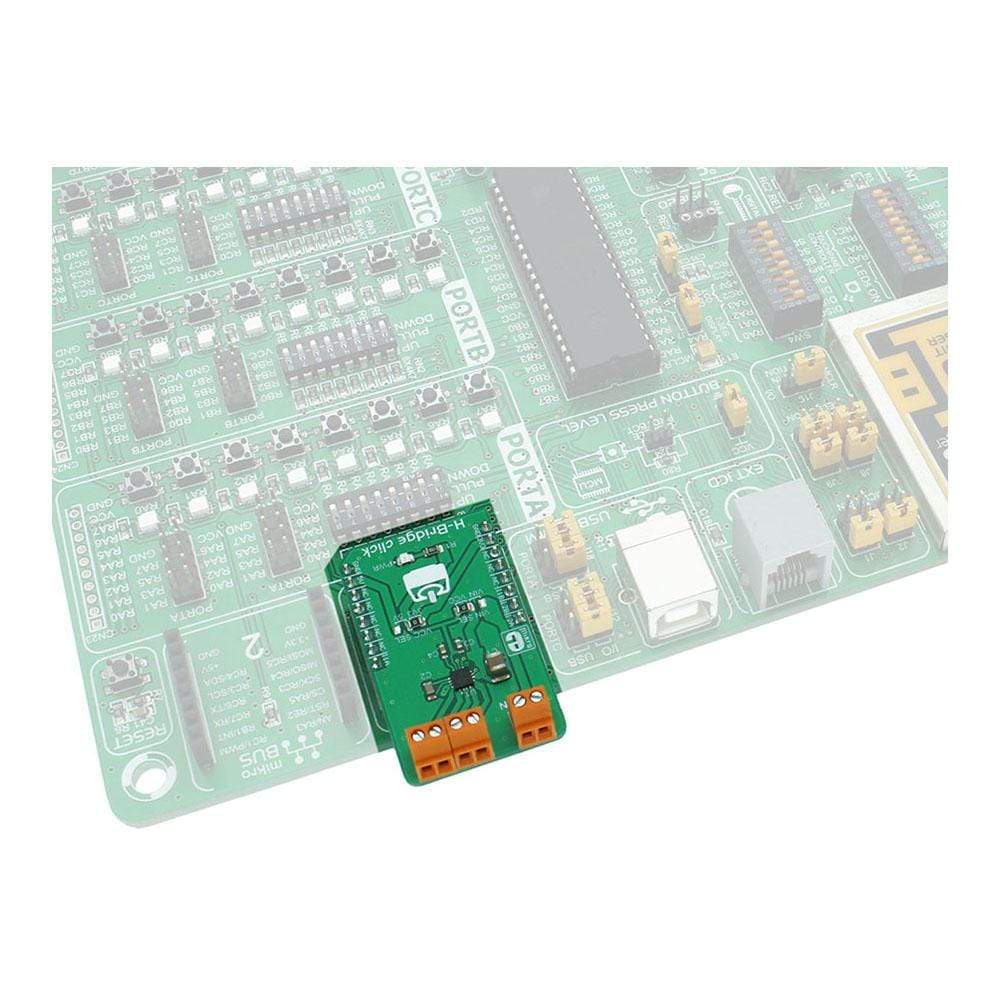



Overview
The H-Bridge Click Board™ is a high-efficiency dual H-bridge driver capable of providing a reasonably high current while driving the connected load with up to 7V. Since the used driver IC has two full H-bridge channels, this Click Board™ is an ideal solution for driving smaller bipolar stepper motors.
The H-Bridge Click Board™ provides driving in both directions, with an addition of the brake mode, and the high impedance mode (Hi-Z). Overshoot current suppression algorithm protects the output stages from being damaged if both high-side and low-side MOSFETs on a single H-bridge channel become conductive.
Downloads
Le H-Bridge Click Board™ est un driver à double pont en H à haut rendement capable de fournir un courant raisonnablement élevé tout en pilotant la charge connectée jusqu'à 7 V. Étant donné que le circuit intégré de pilotage utilisé dispose de deux canaux de pont en H complets, ce Click Board™ est une solution idéale pour piloter des moteurs pas à pas bipolaires plus petits.
La carte Click Board™ H-Bridge permet une commande dans les deux sens, avec en plus le mode freinage et le mode haute impédance (Hi-Z). L'algorithme de suppression du courant de dépassement protège les étages de sortie contre les dommages si les MOSFET côté haut et côté bas d'un même canal H-bridge deviennent conducteurs.
| General Information | |
|---|---|
Part Number (SKU) |
MIKROE-3031
|
Manufacturer |
|
| Physical and Mechanical | |
Weight |
0.02 kg
|
| Other | |
Country of Origin |
|
HS Code Customs Tariff code
|
|
EAN |
8606018712984
|
Warranty |
|
Frequently Asked Questions
Have a Question?
Be the first to ask a question about this.




